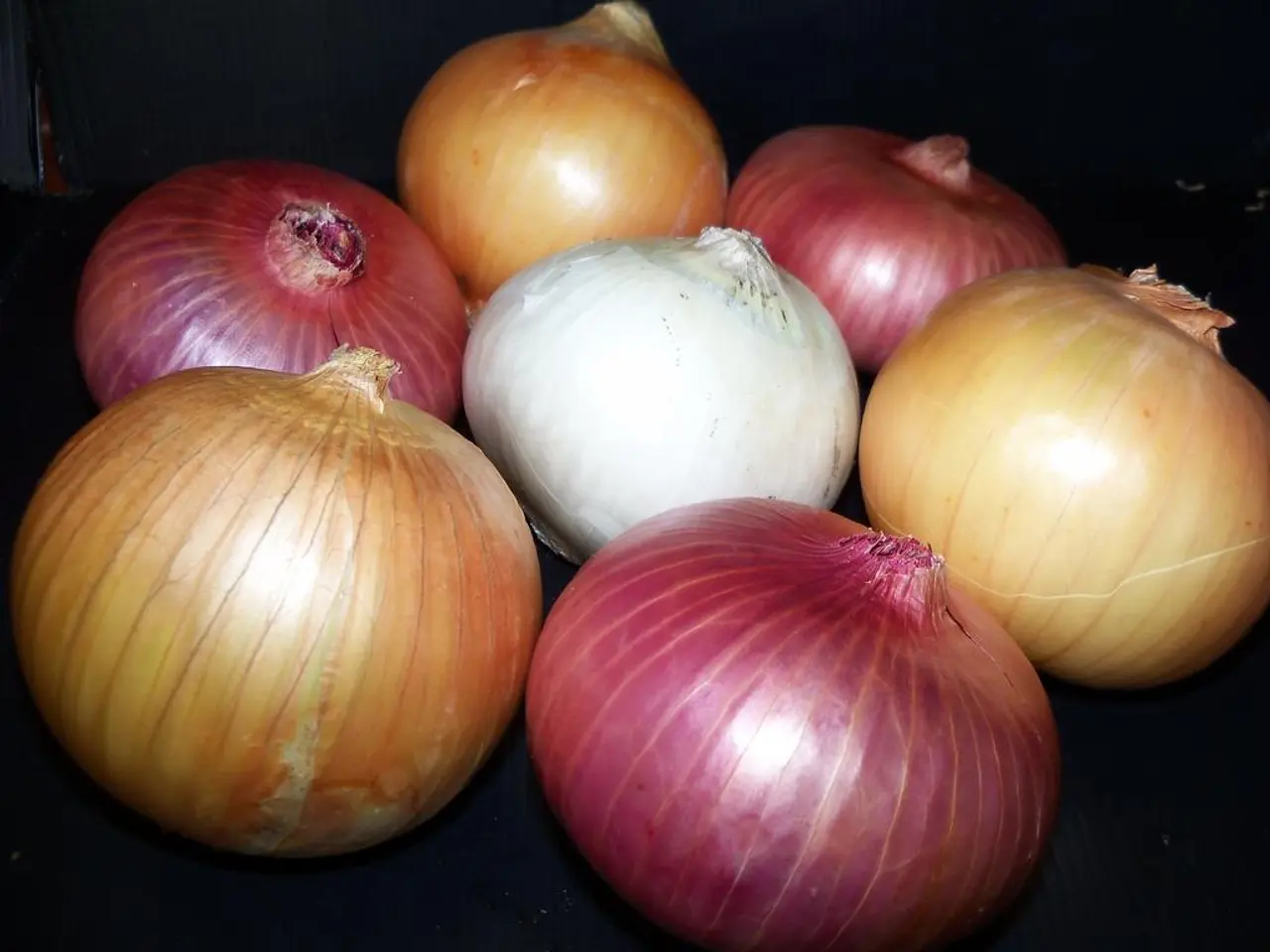Garlic Cultivation Guide: Essential Tips and Tricks for Successful Garlic Cultivation
The humble garlic bulb is a versatile and essential ingredient in many kitchens across the UK. Whether you're a seasoned gardener or a novice, growing your own garlic can be a rewarding and straightforward process. Here's a guide to help you get started.
Growing Garlic in the UK
Garlic can be grown in a warm, sunny spot, in fertile, free-draining soil that doesn't get too wet in winter. If you have heavy clay soil, you can start off by planting garlic cloves singly in module trays in late autumn and then growing them on in a cold frame. If you have no space, or your plot has been affected by onion white rot in the past, then growing in containers is for you.
Types of Garlic
There are two types of garlic to grow: softneck garlic and hardneck garlic. Softneck garlic provides the greatest number of cloves per bulb (up to 18), making it ideal for indoor cultivation and milder regions. Hardneck garlic, on the other hand, is generally hardier and produces fewer cloves (usually 10 or less). Hardneck garlic varieties tend to have more flavor than softneck varieties and work well when roasted whole.
Choosing the Right Variety
Choosing between softneck and hardneck varieties depends on your preferences. For milder tastes and longer storage, opt for softneck types like Mersley Wight and Italian Purple. If you prefer stronger flavors and larger bulbs, choose hardneck varieties such as Carcassonne and Music.
Top Garlic Varieties for the UK
- Mersley Wight (Softneck)
- Origin: Mersley Farm, Isle of Wight, UK
- Characteristics: Large cloves, mild and sweet flavor, long storage (up to 10 months), productive, ornamental, and disease-free
- Italian Purple Garlic (Softneck)
- Characteristics: Mild, rich, and smooth flavor, large cloves with thick skin, easy to peel, adaptable, and easy to cultivate
- Carcassonne Garlic (Hardneck)
- Characteristics: Robust, vigorous growth, pink cloves, and exceptional flavor intensity
- Music Garlic (Hardneck)
- Characteristics: Big bulb size, strong flavor, and popular hardneck variety
Caring for Your Garlic
Always buy bulbs at the garden centre or order from a seed supplier - don't use bulbs from the supermarket. Break up the bulbs into separate cloves and plant the large ones with the fat end downwards and the pointy end 3cm below the soil surface, or deeper in sandy soils or raised beds. Garlic bulbs should be stored in a cool, dry place, taking care not to bruise them. Softneck garlic varieties store better than hardneck garlic and should keep for several months.
Harvesting and Storing Garlic
Harvest from July onwards, once the top growth has begun to die back. Leave the bulbs to dry out for a few weeks by laying them out on a table or on racks, in full sun and out of the rain. After drying, store the garlic in a cool, dry place, away from direct sunlight.
Common Challenges and Solutions
Birds have a penchant for the emerging bulbs and will pull them out of the soil. To prevent this, lay bird netting or horticultural fleece over new plants until they are well rooted enough to resist pulling. Leek rust is a fungal infection that can affect garlic, especially in wet weather. If affected, remove the diseased foliage or harvest and eat the affected bulbs immediately to prevent the disease spreading. Dispose of the rest of the plant material.
Onion White Rot
Onion white rot is a soil-borne disease that can affect garlic. The first sign of infection is usually yellowing, wilting foliage, which tends to occur around harvest time. If affected, dig up the plants and bin or burn them - do not add them to the compost heap. In future, grow garlic in containers, in fresh soil that does not come from the garden.
Conclusion
Growing garlic can be an enjoyable and rewarding experience, providing you with fresh, homegrown produce. With a wide variety of options available, from mild and sweet Mersley Wight to robust and flavorful Carcassonne, there's a garlic variety to suit every taste and growing condition. So, why not give it a try?
- For gardening enthusiasts who prefer container cultivation or have heavy clay soil, growing garlic in raised beds could be an ideal solution.
- If you're looking to create a home-and-garden lifestyle and have an interest in homegrown produce, growing garlic varieties like Mersley Wight or Italian Purple as part of your gardening hobbies can significantly enhance your lifestyle.





